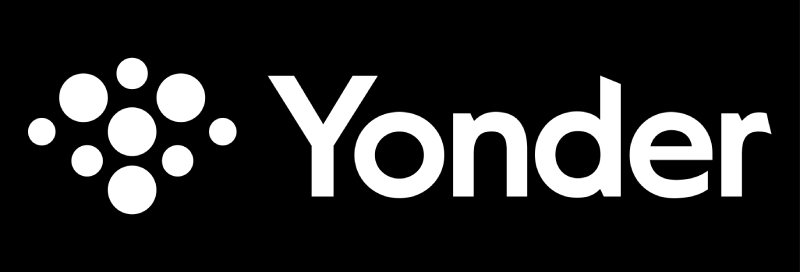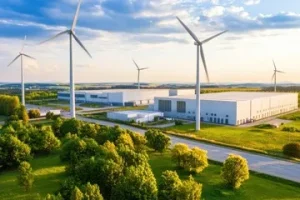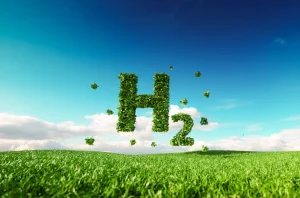AC-DC Rectifiers: How They Work, Types, Applications & Role in Green Hydrogen
What is an AC-DC Rectifier?
An AC-DC rectifier is an electrical device that converts alternating current (AC) into direct current (DC). It typically uses components like diodes, thyristors, or bridge circuits to perform this conversion.
Why Rectification is Needed
Most household and industrial electrical systems supply AC power, but many electronic devices—such as smartphones, laptops, LED lights, and battery chargers—require DC power to operate. Rectifiers make this conversion possible, allowing AC-powered systems to run DC-based electronics safely and efficiently.
AC vs DC Overview
- Alternating Current (AC): The direction and magnitude of the current change periodically. It is the standard for power distribution (e.g., wall outlets).
- Direct Current (DC): The current flows in one constant direction. It is essential for electronic circuits, batteries, and digital devices.
Rectifiers bridge the gap between the AC power grid and DC-powered devices.
How Does an AC-DC Rectifier Work?
An AC-DC rectifier works by using electronic components to allow current to flow in only one direction, effectively converting the bidirectional nature of AC into unidirectional DC.
Basic Circuit Function
The core function of a rectifier circuit is to block the negative half (or reverse direction) of an AC waveform, producing a pulsating DC output. This output can then be smoothed using filters (like capacitors) to achieve a more stable DC voltage.
There are two main types of rectifier circuits:
- Half-Wave Rectifier: Uses a single diode to pass only one half of the AC cycle.
- Full-Wave Rectifier (Bridge Rectifier): Uses four diodes in a bridge configuration to convert both halves of the AC cycle into DC.
Diodes, Thyristors, and IGBTs Explained
- Diodes: These are the most basic component used in rectifiers. They allow current to flow in one direction only, making them ideal for converting AC to DC.
- Thyristors (SCRs): Used in controlled rectifiers, thyristors act like diodes with a gate control, allowing more precise switching and timing of current flow. They’re common in industrial power supplies and motor drives.
- IGBTs (Insulated Gate Bipolar Transistors): While not typically used in basic rectifiers, IGBTs are found in active rectifiers or inverter-based systems. They offer high efficiency and fast switching, suitable for high-power applications and modern power converters.
Half-Wave Rectifier

Full-Wave Bridge Rectifier
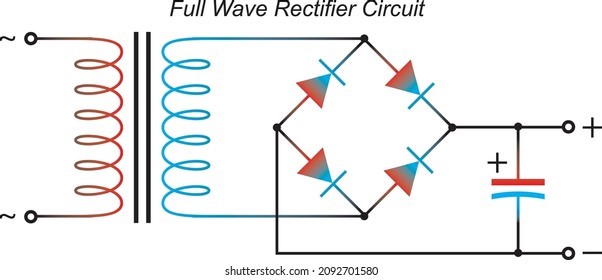
Types of AC-DC Rectifiers
AC-DC rectifiers come in various configurations based on their design, control method, and the type of AC input they handle. Below are the key types:
Half-Wave Rectifier
A half-wave rectifier uses a single diode to convert only one half of the AC waveform (typically the positive half) into DC. The negative half is blocked, resulting in a pulsating and inefficient output.
- Pros: Simple and low-cost
- Cons: Low efficiency, high ripple
Full-Wave Rectifier
A full-wave rectifier converts both halves of the AC waveform into DC. This can be done using:
- Two diodes with a center-tapped transformer, or
- A bridge rectifier using four diodes.
The result is a more efficient and smoother DC output compared to a half-wave rectifier.
Bridge Rectifier
A bridge rectifier is the most common type of full-wave rectifier. It uses four diodes arranged in a bridge configuration to convert both halves of the AC cycle into pulsating DC—without needing a center-tapped transformer.
- Pros: High efficiency, transformer not always required
- Common Use: Power adapters, chargers, LED drivers
Controlled vs Uncontrolled Rectifiers
- Uncontrolled Rectifier: Uses diodes only, and the output DC voltage depends entirely on the input AC. It cannot be regulated or switched off easily.
- Controlled Rectifier: Uses thyristors (SCRs) or IGBTs, allowing the output voltage and timing to be adjusted by controlling the gate signals. Often used in industrial motor drives, HVDC systems, and variable power supplies.
Single-Phase vs Three-Phase Rectifiers
- Single-Phase Rectifier:
- Works with standard household AC power (1 phase, 2 wires)
- Suitable for low to medium power applications
- Three-Phase Rectifier:
- Works with 3-phase AC (common in industrial systems)
- Provides smoother and higher-power DC output with less ripple
- Often used in heavy machinery, electric vehicles, and high-voltage power systems
Role of AC-DC Rectifiers in Green Hydrogen Production
In green hydrogen production, AC-DC rectifiers play a critical role in enabling the operation of electrolysis systems that split water into hydrogen and oxygen using electrical energy. Since most power grids and renewable energy sources supply alternating current (AC), rectifiers are essential to convert this AC into direct current (DC) required by electrolysers.
Why Electrolysers Need DC Power
Electrolysers—such as alkaline, PEM (Proton Exchange Membrane), or solid oxide electrolysers—require DC power to drive the electrochemical reactions that split water (H₂O) into hydrogen (H₂) and oxygen (O₂). These reactions rely on a steady, unidirectional current, which cannot be provided directly by AC sources.
How Rectifiers Feed Electrolysers
AC-DC rectifiers are used to:
- Convert grid or renewable AC power (from solar panels, wind turbines, etc.) into DC
- Deliver a stable and controlled DC output to the electrolyser stack
- Interface with power electronics and control systems for precise power delivery
In large-scale hydrogen plants, industrial-grade rectifiers are used, often based on thyristors or IGBTs, due to their high efficiency and controllability.
Voltage and Current Tuning
Different types of electrolysers require specific voltage and current ranges to operate optimally. Rectifiers are designed to:
- Adjust the output voltage to match the electrolyser cell voltage (often in the range of 1.6–2.2 V per cell)
- Control current levels, which directly affect hydrogen production rate
- Enable modulation and ramping to align with variable renewable energy input
This fine-tuning is essential to ensure safe, efficient, and flexible operation, especially when integrating with intermittent sources like wind or solar.
Impact on Efficiency
Rectifiers have a direct impact on the overall energy efficiency of green hydrogen production:
- High-efficiency rectifiers minimize energy losses during AC-DC conversion
- Poor-quality or mismatched rectifiers can lead to power loss, excess heat, and reduced hydrogen yield
- Advanced rectifier systems with active power factor correction (PFC) and smart controls improve integration with renewable grids and reduce operational costs
In short, rectifiers are not just passive converters—they are a vital part of the power architecture in green hydrogen systems, directly influencing performance, cost, and sustainability.
Applications of AC-DC Rectifiers
AC-DC rectifiers are used wherever direct current is needed from an alternating current source. Their role is especially critical in high-efficiency, high-power systems that demand stable and controllable DC output. Below are key application areas:
Industrial Hydrogen Production
In green hydrogen plants, rectifiers are essential for powering electrolysers that convert water into hydrogen using DC electricity. These systems often operate at megawatt scales, requiring:
- High-current, low-voltage rectifiers
- Precise control to match electrolyser specs
- Compatibility with renewable energy inputs (solar, wind)
Modern systems use controlled rectifiers (e.g., IGBT-based) for high efficiency and dynamic power control, especially in fluctuating renewable environments.
Data Centers
Data centers rely heavily on DC power internally for servers, storage, and networking equipment. While grid power is AC, rectifiers are used in:
- Uninterruptible Power Supplies (UPS)
- Power distribution units (PDUs)
- Converting AC to DC for battery backup systems
Rectifiers in this context must be high-efficiency, low-noise, and highly reliable, as any power instability can result in data loss or downtime.
Renewable Energy Systems
Rectifiers are key in renewable setups where AC is generated (e.g., from wind turbines) or needs to be stored in DC-based systems (like batteries or hydrogen electrolysers):
- Wind turbines: Often generate AC that must be rectified before storage or conversion
- Hybrid systems: Solar (DC) and wind (AC) inputs may be combined into a unified DC bus
- Battery storage systems: Require rectification and charge control for AC-fed charging
These applications demand high efficiency, flexibility, and grid-friendly operation, often integrating smart control systems and real-time monitoring.
IGBT, Thyristor, and SCR-based Rectifiers
Modern rectifiers can be built using different types of semiconductor switches. The choice of technology—IGBTs, thyristors, or SCRs—directly affects performance, control capability, and suitability for different applications, especially in green hydrogen projects.
Differences
Feature | IGBT (Insulated Gate Bipolar Transistor) | Thyristor | SCR (Silicon-Controlled Rectifier) |
Control | Fully controllable (turn-on and turn-off) | Semi-controllable (turn-on only) | Like a thyristor; requires external commutation |
Switching Speed | Fast (kHz range) | Slower (50–500 Hz typical) | Slow |
Efficiency | High, especially at high frequencies | High at large, steady loads | High in basic applications |
Complexity | More complex, needs control circuitry | Simpler, cost-effective for fixed loads | Simple but limited in dynamic control |
Cost | Higher | Moderate | Low |
Size/Weight | Compact | Bulky in high-power systems | Similar to thyristors |
Use-Case Comparison
- IGBT-based Rectifiers:
- Best for variable loads, renewables, and precise power control
- Used in modern electrolysers, EV chargers, and smart grid systems
- Ideal where efficiency + dynamic response are key
- Thyristor-based Rectifiers:
- Used in industrial motor drives, steel plants, older electrolyser systems
- Good for constant high-power applications
- Less suited to variable renewable inputs
- SCR-based Rectifiers:
- Often used in basic or legacy systems
- Economical for simple, unchanging loads
- Lacks the responsiveness needed for renewables or smart systems
Which is Best for Hydrogen Projects?
For green hydrogen production, especially when powered by renewables, IGBT-based rectifiers are the preferred choice:
✅ Why IGBT is best:
- Fast response to changing power supply from solar/wind
- High efficiency and low harmonic distortion
- Precise voltage and current control for optimised electrolyser operation
- Supports advanced control strategies like power factor correction, load sharing, and real-time monitoring
Thyristor-based systems may still be used in large-scale, grid-connected hydrogen plants where input is stable and control is less critical. However, as green hydrogen shifts toward dynamic, renewable-powered production, IGBT-based solutions are becoming the industry standard.
Innovations in AC-DC Rectifiers for Hydrogen & Renewables
As green hydrogen production and renewable integration scale up, AC-DC rectifier technology is evolving rapidly to meet demands for higher efficiency, better control, and compatibility with fluctuating energy sources. Recent innovations are enabling smarter, smaller, and more robust power conversion systems.
Wide Bandgap Semiconductors (SiC, GaN)
Silicon Carbide (SiC) and Gallium Nitride (GaN) are revolutionizing power electronics:
- Higher efficiency: Lower switching losses compared to traditional silicon devices
- High voltage operation: SiC can handle thousands of volts—ideal for large electrolyser systems
- Compact size: Operate at higher temperatures, reducing cooling and system bulk
- Faster switching speeds: Reduce ripple and improve DC output quality
Application: Used in high-power rectifiers for hydrogen plants and next-gen EV chargers, especially where space, efficiency, and heat management are critical.
High-Frequency Switching
Traditional rectifiers operate at lower frequencies (50–60 Hz), but modern designs use high-frequency switching (20 kHz to several hundred kHz):
- Benefits:
- Smaller transformers and passive components
- Faster response to power fluctuations
- Better voltage/current regulation
- Challenges: Requires advanced control systems and high-quality materials (like SiC/GaN)
Application in hydrogen: Enables compact, fast-reacting rectifiers that can pair with fluctuating renewables and still provide clean, stable DC for electrolysers.
Integration with DC-DC Converters
Modern AC-DC systems often include tightly integrated DC-DC converters for advanced power management:
- Purpose:
- Match the rectified voltage to the exact requirements of electrolyser stacks
- Enable modular, scalable hydrogen systems
- Provide multi-stage regulation for smoother output and higher system stability
- Benefits: Improves load flexibility, allows better renewable integration, and enhances protection and safety
Real-world use: In hydrogen plants powered by solar or wind, rectifiers combined with DC-DC converters can dynamically adapt to the source, ensuring optimal electrolyser operation across a wide range of input conditions.
Summary of Impact
These innovations are key to enabling:
- Greater energy efficiency in hydrogen production
- Tighter integration with intermittent renewable energy
- Reduced system footprint and improved reliability
As hydrogen systems move toward smart, distributed, and renewable-powered architectures, next-gen rectifiers will be a central piece of the puzzle.
FAQ:
What is the most efficient AC-DC rectifier?
The most efficient AC-DC rectifiers today are IGBT-based and wide bandgap (SiC or GaN) rectifiers. These devices offer low switching losses, fast response, and excellent control, especially in high-power and renewable-integrated systems.
How to choose the right rectifier for hydrogen electrolysis?
To choose the right rectifier for hydrogen production, consider:
- Power level of the electrolyser
- Input source type (grid, solar, wind)
- Required DC voltage/current
- Control needs (e.g., dynamic power tracking)
For dynamic, renewable-powered systems, IGBT-based or SiC rectifiers with integrated DC-DC converters are the most flexible and efficient.
Can AC-DC rectifiers work with solar power?
Yes. AC-DC rectifiers can work with solar in two ways:
- If the solar source uses microinverters or central inverters, rectifiers handle the AC output
- For DC solar arrays, rectifiers are not needed; instead, DC-DC converters or hybrid systems are used
Some hydrogen systems integrate both AC (wind) and DC (solar) sources with multi-input rectifier architectures.
Conclusion
AC-DC rectifiers are essential components in the transition to clean energy, serving as the critical link between alternating current sources—like the grid or renewables—and the direct current demands of systems such as hydrogen electrolysers, EV chargers, and data centers. As the energy landscape shifts toward decentralization and decarbonization, rectifier technology is evolving rapidly, with innovations in wide bandgap semiconductors, high-frequency switching, and smart integration with power electronics.
For green hydrogen production in particular, choosing the right rectifier—typically IGBT- or SiC-based—can significantly boost efficiency, enable dynamic response to variable renewable inputs, and ensure long-term system reliability. As demand for scalable, flexible hydrogen systems grows, advanced AC-DC rectifiers will remain a cornerstone of modern energy infrastructure.
